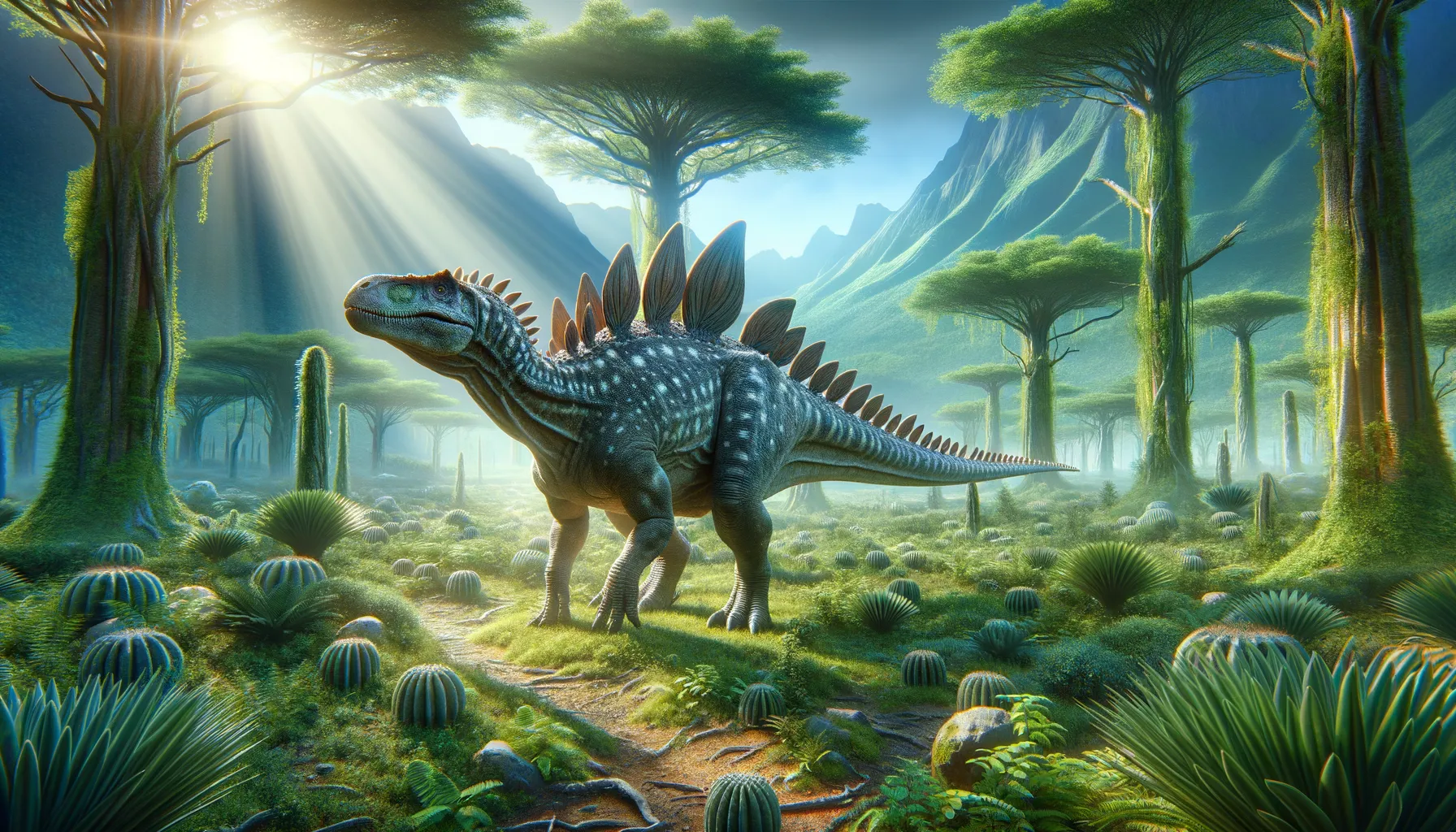
Adratiklit
Unraveling Africa's prehistoric past.
Period
Jurassic
Length
Measured about 30 feet long.
Height
Stood approximately 9 feet tall.
Weight
Weighed around 2.5 tonnes.
Adratiklit was a herbivorous dinosaur from the Middle Jurassic period, recently discovered in North Africa. It belonged to a group of dinosaurs known as 'stegosaurs,' characterized by their unique plates and spikes along the back. Adratiklit brings new insights into the diversity of Jurassic dinosaurs in Africa, a region with less fossil representation compared to others. This discovery highlights the global distribution and adaptability of these ancient creatures.
Diet
Adratiklit was herbivorous, feeding on ferns, cycads, and other plant material prevalent in the Jurassic landscapes. Its beak-like mouth was adept at stripping leaves, making it well-suited to its vegetarian diet.
Hunting
Adratiklit was not a predator. It used its tail spikes for defense against predators rather than to hunt.
Environmental challenges
Adratiklit faced challenges such as climate changes and seasonal droughts impacting food availability. Predators like large theropods may have also posed a threat. The sparse vegetation during dry periods compelled it to migrate in search of better grazing lands.
Speed
Slow-moving due to its heavy build.
Lifespan
Lived for several decades.
First discovery
Discovered in 2019 in Morocco.
Fun Facts
- Adratiklit is known as the first stegosaur species discovered in North Africa.
- The name Adratiklit means 'mountain lizard' in the Berber language, a fitting name for this ancient creature.
- Adratiklit lived during the Middle Jurassic period, making it one of the older stegosaurs.
- Fossils of Adratiklit were found in Morocco, highlighting the rich prehistoric biodiversity of the region.
- Unlike the more famous Stegosaurus, Adratiklit is smaller and lived millions of years earlier.
- Adratiklit had a series of bony plates along its back, a characteristic feature of stegosaurs.
- The discovery of Adratiklit helps scientists understand the evolution and distribution of stegosaurs across the ancient supercontinent Gondwana.
Growth and Development
Adratiklit likely grew steadily, developing its characteristic plates and spikes as it matured. These features may have played roles in defense, thermoregulation, and even social displays. Juveniles might have exhibited faster growth rates to quickly reach a size that deters predators.
Habitat
Adratiklit inhabited lush, semi-arid environments with abundant plant life. Forested areas and open woodlands provided it ample food resources. Water sources such as rivers and lakes were critical for survival, especially during the drier seasons.
Interaction with other species
Adratiklit lived alongside various plant-eating and meat-eating dinosaurs. It may have coexisted peacefully with other herbivores, sharing feeding grounds. Its spiked tail was an effective deterrent against predators, minimizing conflict.
Natural lifespan
Adratiklit could naturally live up to several decades in the wild.
Reproduction
Reproduction likely involved laying eggs, with nests situated in safe, concealed areas. Parental care, if present, would have been minimal post-hatching, though eggs might have been carefully covered or hidden to protect from predators.
Social behaviour
Adratiklit possibly lived in small groups, utilizing numbers for protection. This social structure would have enhanced survival against predators and facilitated migration during environmental changes. Communication may have occurred through visual signals or sounds.
Fossil locations
Fossils of Adratiklit have been found in the Middle Jurassic deposits of Morocco, North Africa. These discoveries have provided important insights into the diversity and distribution of stegosaurs in the region. The Moroccan sites are relatively new to paleontology, offering vast potential for understanding Jurassic wildlife.
